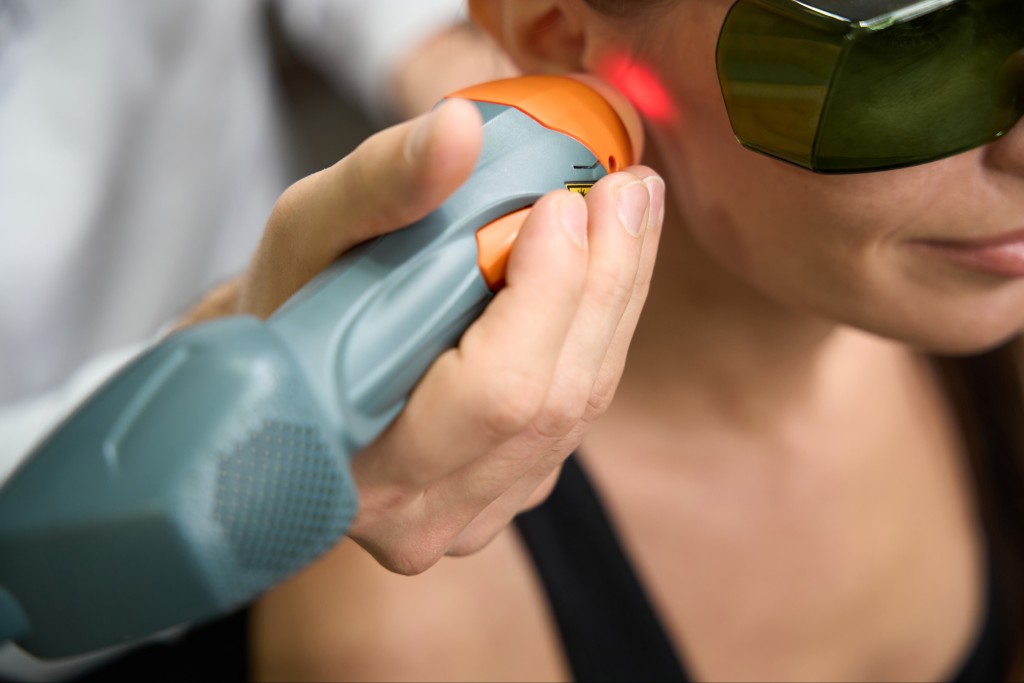Did you grow up watching cartoons like Popeye, who flexed his giant arm muscles every chance he got? The classic arm flex shows off the bicep, which can look quite impressive and also helps you twist your arm and bend at the elbow. Both of your upper arms have a biceps muscle connected to your arm bones by biceps tendons. If you suffer a bicep injury in this area, you won’t be able to do common arm movements like you normally would.
Your arm muscles and tendons are strong and flexible tissues, but they can still become injured. The most common type of injury to the bicep is a tissue tear, which can result in a reduced range of motion in your shoulder and arm. How do you know if you tore your bicep? Check out this information on how your biceps work and five signs that you may have torn your bicep.
Anatomy of the Upper Arm
The bicep muscle runs along the front of your upper arm and supports movements like flexing your arm and rotating your arm outward. Bicep tendons connect the bicep to bones in the shoulder joint and bones in your forearm. Three main tendons connect the bicep muscle to bone. The first, commonly referred to as the long head tendon, attaches the bicep muscle to the top of the shoulder socket. The second tendon, called the short head tendon, connects the bicep to part of your shoulder blade known as the coracoid process. The third tendon connects the bicep to one of the bones in your forearm, known as the radius. Damage to the biceps muscle or any of these tendons can include tissue tears, damage, or detachment from the bone.
5 Signs of a Torn Bicep
Your biceps help you go about everyday movements and tasks, from lifting and carrying things to maintaining a strong and functional upper body. Here are five signs you may have a torn bicep:
Sudden Pain
A bicep tear is typically accompanied by a sharp, sudden pain. You may experience an aching pain at the injury site, along with pain that extends into the rest of your arm. Pain from a torn bicep can last for weeks at a time, depending on the type, severity, and location of the injury. You may also notice increased pain and discomfort when you try to move your arm in certain ways or engage in repetitive activities. If left untreated, this pain can get worse over time, and you may end up with chronic pain and tenderness in the area.
Popping Sound
You may hear a popping sound when the injury happens. Some people who have experienced a sudden bicep tear have described this as an audible snapping sound followed by a tearing sensation. This sign typically happens right away and will be followed by pain, bruising, swelling, and other symptoms.
Bruising
Bruising may develop around the injury site due to a blow to the area that crushes small blood vessels inside the bicep muscle. As blood leaks out of these broken blood vessels, it can become trapped within the soft tissue and appear as discoloration beneath the skin. Bruising from a torn bicep more commonly occurs on the upper arm or shoulder area.
Weakness
A torn bicep can lead to weakness in your shoulder and arm. You may not be able to move or rotate your arm, or when you do perform these movements, you feel weak. You might not feel up to lifting or carrying things because of muscle weakness, pain, and other symptoms that affect your shoulders and arms because of the tear. You may become easily fatigued or worn out due to a bicep tear. Sometimes, a tear can even result in weakness that extends into your wrist and hand.
Distorted Shape
A bicep tear can also lead to a visible bulge or indentation in the upper arm. This type of injury can lead to a distorted shape of your arm if damage to the tendons can’t keep the muscle safely in place. The biceps are often nicknamed the “Popeye” muscle, but too much of a bulge can be a sign of an injury or issue.
Types of Bicep Tears

The types of bicep tears depend on the location and severity of the injury. Your doctor may utilize diagnostic imaging tools like a CT scan or MRI to get a better look at the injured area. The results from these types of scans provide highly detailed images of the muscles and tendons in your arm so they can locate the tear and determine if it is a partial or complete tear. A partial tear refers to a damaged tendon, while a complete tear refers to when the tendon is no longer attached to the bone properly. These are the three main types of bicep tendon injuries:
Proximal Biceps Tendon Tear at Shoulder
The proximal biceps tendon tear occurs at the shoulder and more commonly involves the long-head tendon. The tear may occur suddenly or develop over time, but either can result in the tendon partially or completely tearing away from its attachment at the shoulder joint. If either the long-head or short-head tendon becomes torn, the bicep muscle may separate from the shoulder. With this type of injury, you may still have use of your arm, though a tear in this area can also lead to damage to other structures in the shoulder joint that will require medical attention.
Distal Biceps Tear at Elbow
A bicep tear at the elbow more commonly involves a complete tear due to stress on the tendon at the elbow joint. If you suffer a distal biceps tear at the elbow, your other arm muscles will compensate, and you may still have full use of your arm. However, you will likely still experience pain and weakness in the area. If left untreated, this can result in decreased strength and stability in the tendon. Distal biceps tendonitis, which refers to inflammation in the area, can also occur in the area and make this kind of injury worse.
Biceps Microtears from Tendonitis
Microtears refer to tiny tears along soft tissue that typically occur due to inflammation and irritation in the area. Tendonitis is an inflammation of tendons and commonly occurs with repetitive movements and overuse. Microtears from repeated use of these arm muscles and tendons can also be made worse by other health conditions or injuries like arthritis or a nearby joint dislocation.
Causes of a Torn Bicep
A torn bicep can significantly impact your upper body strength and overall functionality. The two primary causes of a torn bicep are injury and overuse. Recognizing these arm pain causes can help prevent such injuries and ensure the health and strength of your biceps.
Acute Trauma
Sudden trauma to the shoulder, arm, or elbow can result in a torn bicep. This type of injury can affect multiple tissues simultaneously, including muscles, tendons, ligaments, and joint cartilage. Blunt force trauma, like what you might experience in a motorcycle accident or during contact sports, is a common cause of a sudden indentation in the upper arm. In these scenarios, the force applied to the arm can cause significant damage, often tearing the bicep along with other tissues.
Lifting Heavy Objects
Another common cause of a torn bicep is lifting objects that are too heavy. When the weight exceeds what your muscles and tendons can handle, it can lead to an overload, resulting in a tear that might even look like a dent in the upper arm muscle. This is particularly common in weightlifting or a work injury where not using proper form or when attempting to lift more weight than your body is prepared to handle.
Falls
Falls are another frequent cause of torn biceps. When you fall, you may instinctively reach out with your arms to break the fall. This action can put intense and sudden pressure on the muscles and tendons in your arms, including the biceps. The strain from catching yourself can lead to tears, especially if you land awkwardly or with significant force.
Wear and Tear
As you age, the tendons in your body naturally start to fray and lose some of their strength and flexibility. This gradual wear and tear can make them more susceptible to injuries. Over time, the accumulated damage can weaken the tendons, making them more prone to upper arm pain and tears during everyday activities.
Repetitive Motions
Engaging in activities that involve repetitive motions can also lead to a torn bicep. Sports and exercises such as weightlifting, swimming, and tennis require repeated use of the arm muscles, including the biceps. This constant strain can cause overuse injuries, where the muscles and tendons are stressed to the point of tearing. A dent in the bicep caused by repetitive motions is a common answer to the question, “How do you know if you tore your bicep?”
Tendonitis
Tendonitis is a condition characterized by inflammation of the tendons. In the biceps, tendonitis can occur due to repetitive strain or overuse. The inflammation can weaken the area, increasing the risk of a tear. Symptoms of tendonitis include pain, swelling, and reduced mobility, which can further contribute to the risk of injury if not properly managed.
Preventing Bicep Injuries
To prevent injury, it is essential to use proper techniques when engaging in physical activities, especially weightlifting. This includes using appropriate weights, maintaining correct form, and avoiding sudden, jerky movements that can place excessive strain on the biceps. Gradually increasing the intensity and duration of your workouts can help your muscles and tendons adapt without overloading them. This approach reduces the risk of overuse injuries by allowing your body to strengthen gradually.
Incorporating rest days into your exercise routine is necessary to allow your muscles and tendons to recover. Adequate rest helps prevent overuse injuries by giving your body time to repair and strengthen the tissues. Proper warm-up exercises and stretching also help prepare your muscles and tendons for physical activity, reducing the risk of sudden injuries. A good warm-up also increases blood flow to the muscles and improves flexibility, making them less prone to tearing.
How a Doctor Can Help
Our team at AICA Orthopedics can provide you with comprehensive treatment and care for a bicep injury. We offer in-house diagnostic imaging so you can get the scans you need and meet with your orthopedic doctor all in one convenient location. Our team of doctors includes orthopedic surgeons, physical therapists, neurologists, and chiropractors who work together to provide you with a multi-specialty approach to help you recover and rehabilitate after an injury. Visit an AICA Orthopedics location near you in metro Atlanta and get started treating your bicep injury as soon as possible so you can get back to doing the things you love!
Recovery and Rehabilitation from a Torn Bicep
If you’ve been diagnosed with a torn bicep, understanding what comes next can make a big difference in your healing process. Torn bicep muscle symptoms can vary depending on the severity and location of the injury, but recovery always begins with a solid treatment plan. In some cases, a partial tear may be managed with non-surgical interventions such as rest, ice, anti-inflammatory medications, and physical therapy. For a complete tear, particularly one that affects function or appearance, surgery is often recommended to reattach the tendon and restore full strength.
After surgery, patients usually wear a sling or brace for several weeks to keep the arm in a protected position. Physical therapy plays a crucial role in recovery, helping to rebuild strength, restore range of motion, and prevent complications. Your provider will help guide your rehab based on the type of torn bicep you have and how your body responds to treatment. Most people can expect to gradually return to full activity over several months.
It’s important to pay close attention to any bicep tear symptoms that arise during recovery. Swelling, excessive pain, or renewed weakness may indicate complications such as re-tearing the tendon or developing scar tissue that limits movement. Regular check-ins with your healthcare provider help catch any setbacks early and keep your progress on track.
Many people ask, “What does a torn bicep feel like during healing?” Initially, soreness and stiffness are common, especially around the site of the surgery or tear. As you begin gentle movement, you may experience pulling or tension in the area. These are normal parts of the healing process, but sharp pain or sudden loss of motion should be reported to your doctor.
Preventing future injury is another major part of rehabilitation. A torn bicep can be a wake-up call to improve body mechanics, lifting techniques, and overall muscle balance. In fact, many patients realize they were unknowingly compensating for a bicep strain before the tear occurred. Strengthening supporting muscles, improving posture, and avoiding overuse can help reduce your risk of reinjury.
Finding the Right Treatment for a Torn Bicep
Whether you’re healing from a bicep strain or a full tear, listening to your body and following your treatment plan are the best ways to support a full recovery. If you’re dealing with bicep muscle strain or wondering whether your symptoms point to something more serious, it’s always better to seek expert advice early. Ignoring early torn bicep symptoms can lead to more damage and a longer recovery timeline.
At AICA Orthopedics, we offer personalized recovery plans for all types of bicep injuries. From diagnosis to physical therapy, our multidisciplinary team is here to help you regain strength and confidence in your arm.
Don’t underestimate the importance of early diagnosis. Even a minor bicep strain can evolve into something more serious if you continue to use the muscle without proper care. Knowing the warning signs—such as persistent soreness, unusual swelling, or limited range of motion—can help you act fast. If you’re ever unsure, consult a specialist to rule out a more serious condition like a torn bicep. Prompt attention and a proactive approach are your best allies in recovery.








